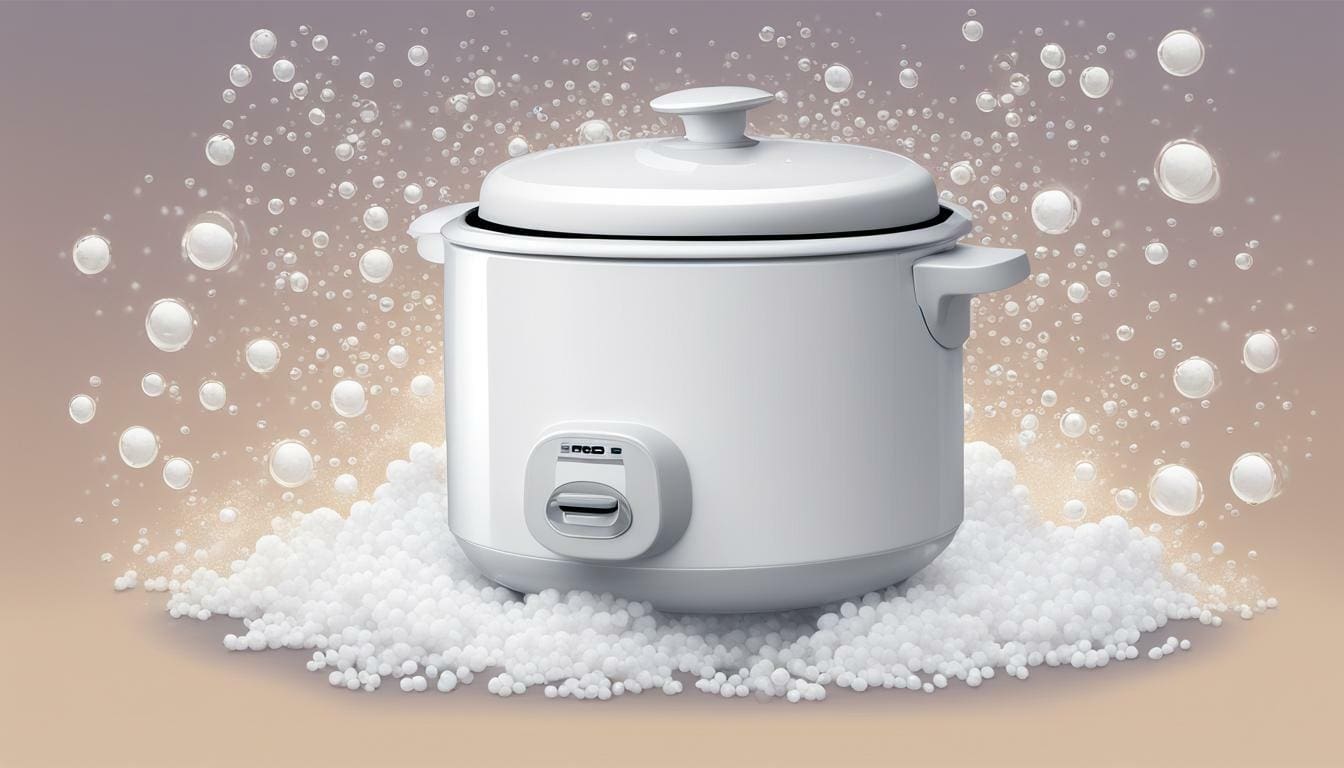Are you tired of your rice boiling over and creating a mess in your rice cooker? This common problem can be frustrating, especially when you’re in a rush to prepare a meal. In this article, we will discuss the reasons behind this issue and provide troubleshooting tips so you can achieve perfectly cooked rice without any bubbling. Let’s dive into it!
Key Takeaways:
- Bubbling in the rice cooker is a common issue that can be caused by various factors.
- Adjusting the water-to-rice ratio and choosing high-quality rice can help prevent bubbling.
- Proper maintenance and cleaning of your rice cooker is crucial for its optimal functioning.
Rice Cooker Water Ratio
Achieving the perfect water-to-rice ratio is key to preventing bubbling in your rice cooker. When the ratio is off, excess water can cause the rice to bubble, leading to an uneven texture and taste. To prevent this, follow these rice cooker tips to ensure your rice cooks perfectly every time.
Ideal Water Ratio
The ideal water ratio varies depending on the type of rice you are cooking. In general, long-grain rice requires a water-to-rice ratio of 1:1.5, while short-grain rice requires a ratio of 1:1.25. Brown rice typically requires more water than white rice, with a ratio of around 1:2.
It’s also important to consider the age of your rice, as older rice may require more water. Use the rice cooker’s measuring cup that comes with it to ensure you’re adding the correct amount of water.
Rice Cooker Tips
In addition to using the proper water ratio, there are a few other tips to prevent bubbling in your rice cooker. First, rinse your rice thoroughly before cooking to remove excess starch. This will help prevent the rice from sticking together and bubbling.
Second, use the correct rice cooker setting for your type of rice. Many rice cookers have different settings for different types of rice, so be sure to select the one that matches the rice you are cooking.
Lastly, avoid opening the rice cooker lid during the cooking process, as this can cause the rice to bubble. Trust the cooker to do its job and wait until it’s finished before checking on it.
Following these rice cooker tips and using the proper water ratio will help prevent bubbling and ensure perfectly cooked rice every time.
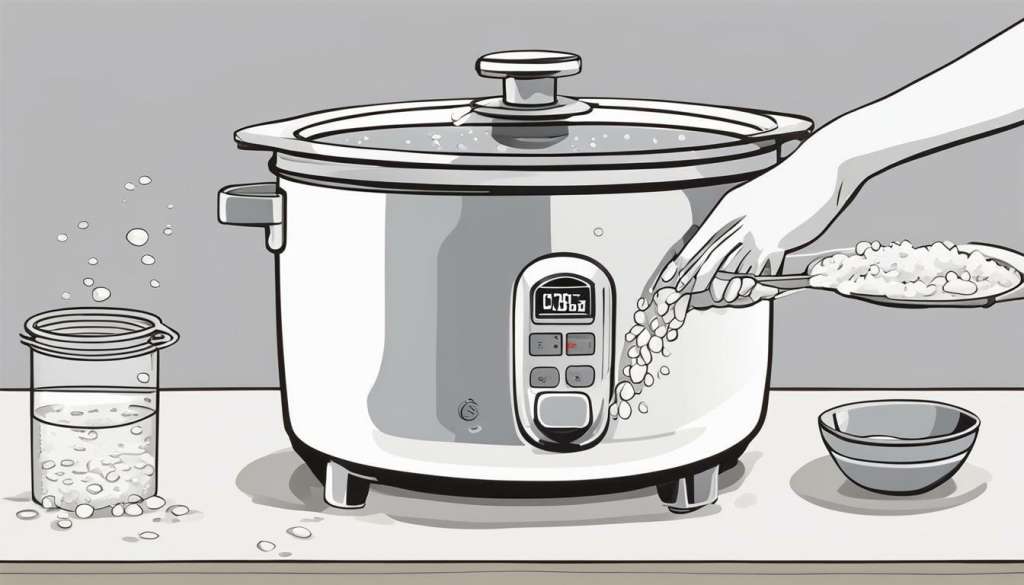
Incorrect Rice Cooker Settings
Incorrect settings on your rice cooker can be a common problem that leads to bubbling issues. Some common mistakes include setting the wrong cooking time or temperature, or accidentally selecting the wrong type of rice.
If your rice is bubbling in the cooker, double-check your settings to make sure everything is correct. If you’re not sure, consult your rice cooker’s manual for troubleshooting advice or try resetting it to default settings.
It’s also important to keep your rice cooker clean to prevent any malfunctions. Make sure to wipe down the control panel and any buttons regularly with a damp cloth and avoid using harsh chemicals.
If you’re still experiencing issues with your rice cooker after checking the settings, it may be time to replace it. Rice cookers can experience wear and tear over time, so it’s important to invest in a high-quality one and maintain it properly for the best results.
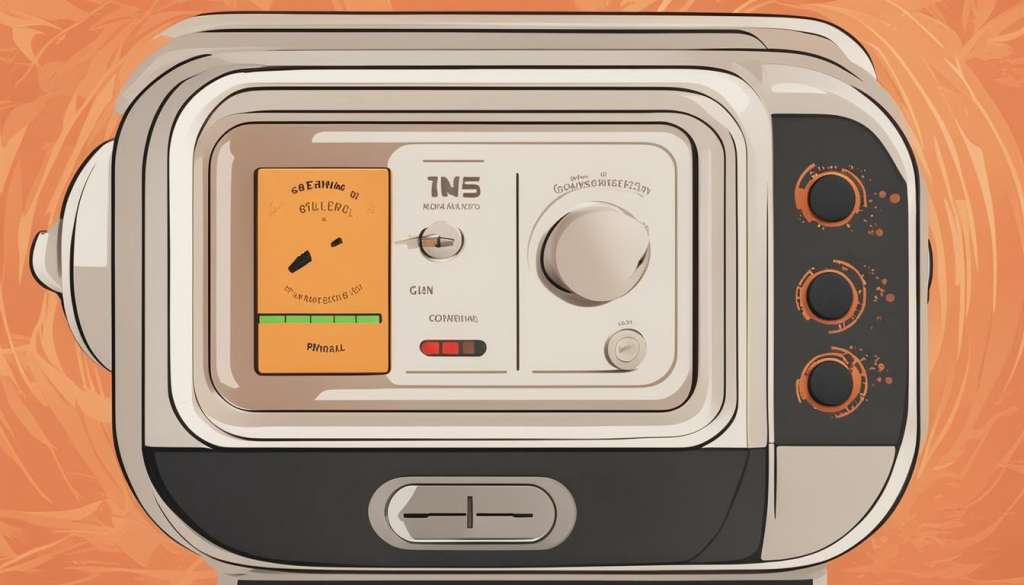
Excessive Starch Release
If your rice cooker bubbles excessively, it may be due to the excessive starch released during the cooking process. Starch molecules in the rice grains break down when they absorb hot water, which creates a starchy film on the rice surface and leads to excessive bubbling.
To minimize starch release, rinse the rice several times before cooking to remove any excess starch on the surface. Soaking the rice for 30 minutes to an hour before cooking can also help to reduce starch release.
Additionally, using high-quality rice can reduce the amount of starch released during cooking. High-quality rice has a lower percentage of broken grains, which leads to less starch release.
If you are still experiencing excessive bubbling, consider reducing the amount of rice you cook at one time. Overcrowding the rice cooker can cause the rice to cook unevenly and release more starch.
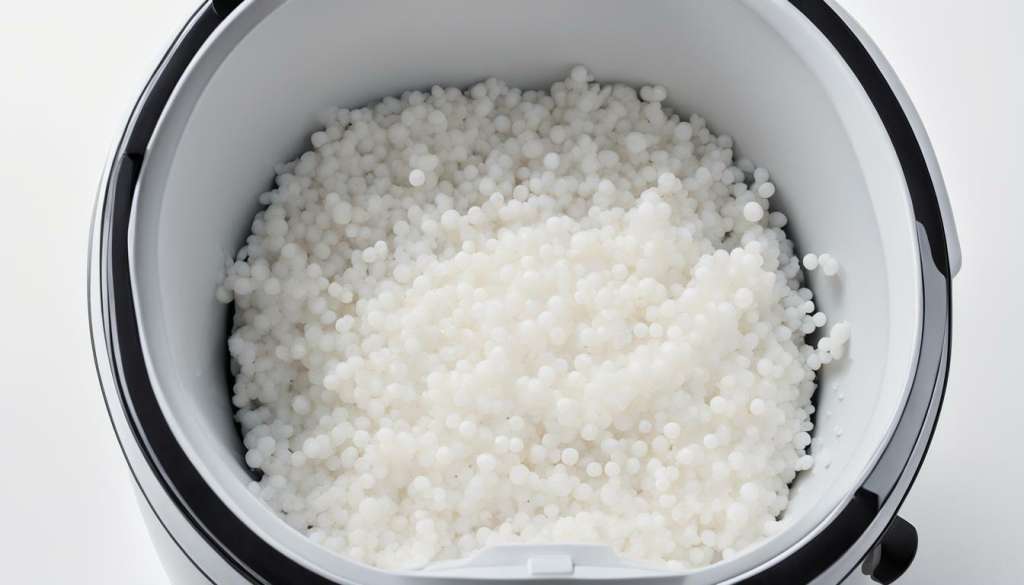
Rice Rinse Method
One often overlooked factor that can cause bubbling in the rice cooker is the rice rinse method. Rinsing rice removes excess starch, which can cause it to become sticky and lead to bubbling during cooking. However, if rice is not rinsed properly, it can still have excess starch that causes bubbling.
The first step is to measure the rice and rinse it with cold water until the water runs clear. This ensures that excess starch is removed, resulting in evenly cooked rice. After rinsing, use the appropriate water ratio for the type of rice being used to ensure consistent results.
Additionally, adding too much water during the rinse process can cause the rice to become saturated and lead to bubbling in the cooker. Ensure to use the correct amount of water for rinsing and cooking to prevent this issue.
Using the appropriate rice-to-water ratio and rinsing the rice properly can help prevent bubbling in the rice cooker. Be sure to follow these tips and adjust them accordingly based on the type of rice and rice cooker being used.
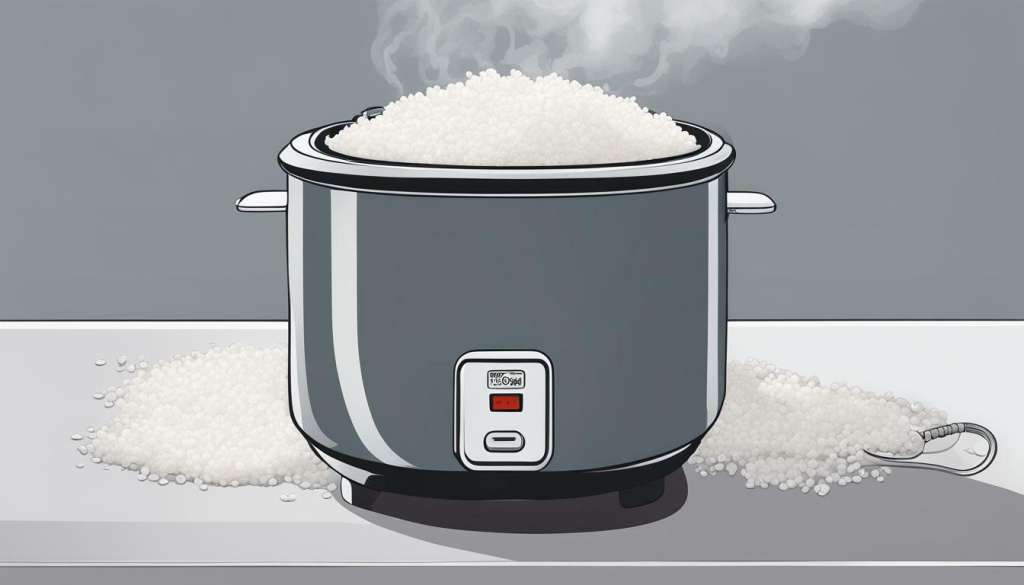
Proper rice rinsing is a crucial step in preventing bubbling in the rice cooker. Photo by Lan from Pexels
Rice Cooker Maintenance
Maintaining your rice cooker in good condition is crucial to avoid bubbling issues and other problems that can affect the cooking outcome. Here are some tips to troubleshoot common rice cooker problems:
- Make sure the power cord is securely plugged into the outlet and the rice cooker.
- Check the heating plate to ensure it is clean and free of any debris or residue that may affect the cooking process.
- Regularly clean the rice cooker with warm water and mild detergent to keep it free of buildup and debris.
- Remove any excess water or moisture from the rice cooker after use to prevent rust and damage to the heating plate.
- Store the rice cooker in a dry and cool place to prevent damage and ensure a longer lifespan.
If you encounter any issues with your rice cooker, consult the troubleshooting guide provided in the user manual or contact the manufacturer’s customer service for assistance. Taking good care of your rice cooker can help ensure that it functions properly and delivers perfectly cooked rice every time.
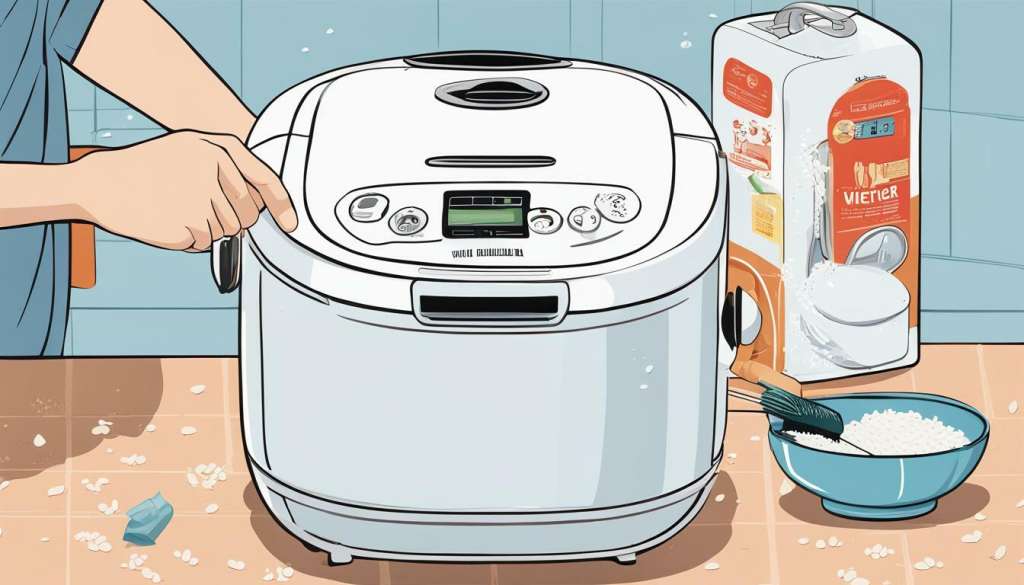
Quality of Rice
The quality of the rice you use can have a significant impact on the cooking process in the rice cooker. If you experience bubbling issues, it could be due to low-quality rice. When purchasing rice, look for grains that are long and slender with minimal broken pieces. Avoid rice with a lot of dust or excess debris, as these can affect the rice’s cooking behavior and lead to problems in the rice cooker.
Additionally, different types of rice have different cooking properties. For example, sticky rice may require a different water-to-rice ratio compared to regular white rice. It is essential to read the instructions on the rice package to determine the ideal water ratio for your rice cooker. If you are experiencing bubbling issues, it may be worth experimenting with different types or brands of rice to find one that works best for your rice cooker.
Finally, storing your rice correctly is crucial for maintaining its quality. Rice should be stored in a sealed container in a cool, dry place to prevent moisture and pests from affecting the grains. Proper storage can improve the quality of your rice and prevent cooking problems in the rice cooker.

To troubleshoot any rice cooker problems, it is essential to use high-quality rice, store it correctly, and follow the manufacturer’s instructions. If you are still experiencing issues, refer to our rice cooker troubleshooting guide for further tips and tricks.
Rice Cooker Size and Capacity
Choosing the right size and capacity rice cooker is essential to avoid bubbling issues. If you use a small rice cooker for a large amount of rice, the rice may overflow and bubble. Conversely, using a large rice cooker for a small amount of rice may result in undercooked or unevenly cooked rice.
To determine the right size and capacity rice cooker for your needs, consider the amount of rice you typically cook. For a small family or individual, a 3-cup rice cooker may be sufficient. For larger families or gatherings, a 5- or 10-cup rice cooker may be more suitable.
When using a new rice cooker, always refer to the manufacturer’s instructions for the recommended amount of rice and water to use. Additionally, avoid overfilling the rice cooker, as this can lead to bubbling and spillage.
If you already have a rice cooker and are experiencing bubbling issues, consider the size and capacity of the cooker. If it’s too small for the amount of rice you’re cooking, it may be time to upgrade to a larger size.
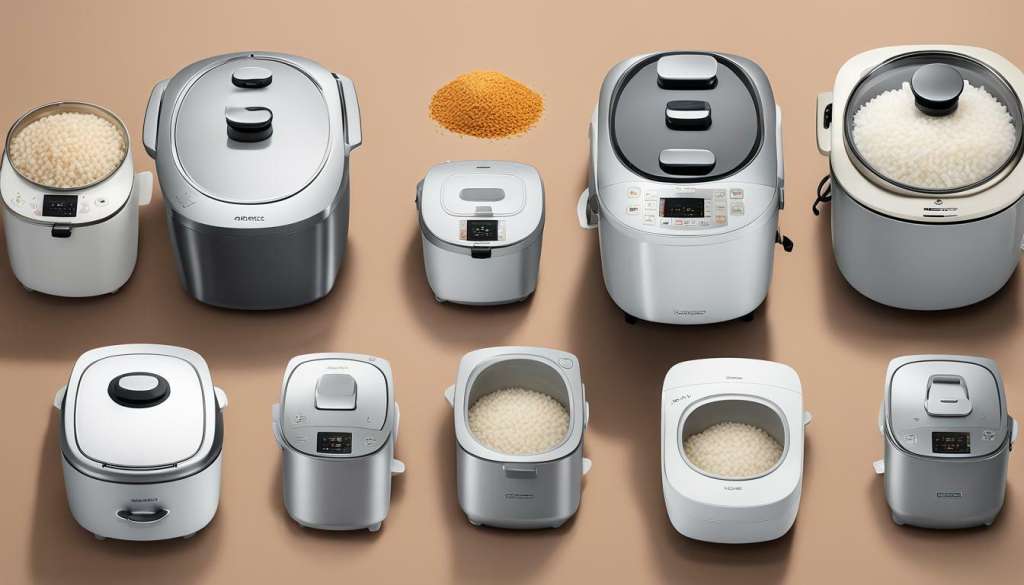
Tip: To ensure even cooking and prevent bubbling, avoid using too much or too little water. Refer to the rice cooker water ratio guidelines and measure carefully to achieve the perfect water-to-rice ratio.
Rice Cooker Troubleshooting: Preventing Bubbling for Perfectly Cooked Rice
Proper usage and maintenance of your rice cooker can make all the difference in achieving perfectly cooked rice. If you’re experiencing bubbling in your rice cooker, there are several reasons why this could be happening. Here are some tips to troubleshoot and prevent bubbling for perfectly cooked rice every time:
Check Your Rice Cooker Water Ratio
The water-to-rice ratio is crucial in preventing bubbling. Be sure to follow the recommended ratio for the type of rice you are cooking. For white rice, the ratio is typically 1:1.5 (one cup of rice to 1.5 cups of water), while brown rice requires a higher ratio of 1:2.5. Following the right ratio can prevent excess starch and bubbling.
Avoid Incorrect Rice Cooker Settings
Incorrect settings on your rice cooker can also lead to bubbling. Be sure to read the instructions carefully and adjust the settings accordingly for the type of rice you are cooking. Avoid using the wrong settings, such as a slow cook option for white rice, as this can cause excess water to evaporate, resulting in bubbling.
Minimize Starch Release
Excessive starch release during the cooking process can also cause bubbling. Rinse your rice thoroughly before cooking to remove excess starch and use a fine mesh strainer to prevent any remaining starch from entering the rice cooker.
Rinse Your Rice Properly
The way you rinse your rice can also impact its cooking behavior. Be sure to rinse the rice in cold water until the water runs clear, and avoid over-rinsing as this can wash away essential nutrients. Proper rinsing can prevent excess starch and bubbling in the rice cooker.
Maintain Your Rice Cooker Regularly
Regular maintenance of your rice cooker can also help prevent bubbling. Clean your rice cooker after every use and descale it every few months to remove any buildup. Be sure to follow the manufacturer’s instructions for proper cleaning and maintenance.
Choose High-Quality Rice
The quality of rice you use can also impact the cooking process. Choose high-quality rice from reputable brands and avoid using old or expired rice, as this can affect its cooking performance and lead to excess starch and bubbling.
Select the Right Rice Cooker Size
Using the right size and capacity rice cooker is essential to avoid bubbling issues. If you’re cooking for a small family, a 3-cup rice cooker may suffice, but if you’re cooking for a larger group, a 5- or 10-cup rice cooker may be a better option. Choosing the right size can ensure even cooking and prevent excess bubbling.
By following these tips, you can troubleshoot and prevent bubbling in your rice cooker for perfectly cooked rice every time. Remember to follow the recommended water-to-rice ratio, maintain your rice cooker, choose high-quality rice, and select the right size for your needs. With these tips, you can enjoy delicious and fluffy rice with no bubbling issues!
FAQ
Q: Why is my rice bubbling in the rice cooker?
A: There can be several reasons for rice bubbling in the rice cooker. It could be due to an incorrect rice cooker water ratio, incorrect settings on the rice cooker, excessive starch release, the rice rinse method, the quality of rice, or the size and capacity of the rice cooker.
Q: How can I prevent bubbling in my rice cooker?
A: To prevent bubbling, make sure to use the correct water-to-rice ratio, avoid incorrect settings on the rice cooker, minimize starch release, rinse the rice properly, use high-quality rice, and choose the right size and capacity rice cooker.
Q: What is the ideal water ratio for different types of rice?
A: The water ratio can vary depending on the type of rice you are cooking. As a general guideline, use a 1:1.5 water-to-rice ratio for white rice and a 1:2 water-to-rice ratio for brown rice. Adjust the ratio slightly based on your preference for softer or firmer rice.
Q: What are some common mistakes to avoid when using a rice cooker?
A: Some common mistakes to avoid include using an incorrect water ratio, choosing the wrong settings on the rice cooker, not rinsing the rice properly, using low-quality rice, and using a rice cooker that is too small or too large for your needs.
Q: How can I minimize starch release during rice cooking?
A: To minimize starch release, rinse the rice thoroughly before cooking, use the proper water ratio, and avoid stirring the rice during the cooking process.
Q: How often should I clean and maintain my rice cooker?
A: It is recommended to clean and maintain your rice cooker after every use. This includes removing any leftover rice and residue, wiping the inner pot and outer surface, and checking for any signs of damage or wear.
Q: How does the quality of rice affect cooking behavior?
A: The quality of rice can impact the cooking process and result in issues like bubbling. Using high-quality rice ensures better texture and taste in the cooked rice.
Q: How do I choose the right size and capacity rice cooker?
A: Consider the number of people you usually cook for and choose a rice cooker with a suitable capacity. A larger rice cooker may result in uneven cooking, while a smaller one may not be sufficient for your needs.

